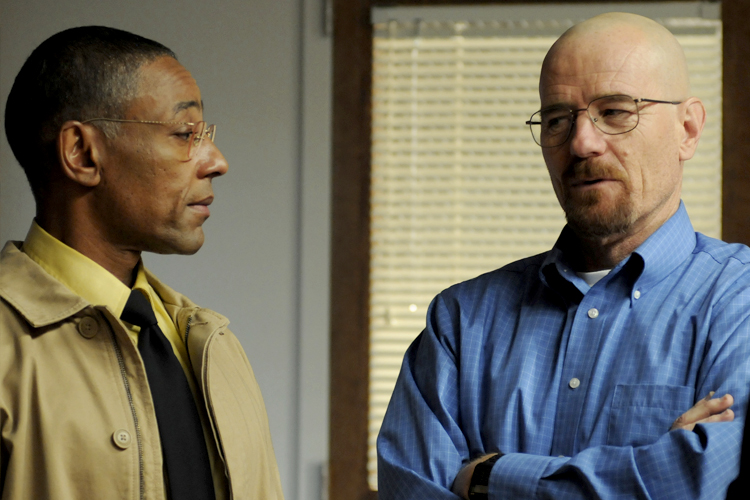
(Photo Credit: AMC/Ursula Coyote)
Competition in Business, Rivalries and the Customer Experience
Once upon a time there were two guys named Jack and Ted. This is their story.
Jack and Ted worked in the same industry in the same town. It wasn’t an overly small town, but it wasn’t a big city, either and it didn’t take long before a little home town rivalry began to brew.
Jack knew that his product was superior to Teds and as far as he was concerned, he definitely knew how to take care of the good folks in town far better than that Ted guy.
Ted firmly believed he just needed to keep doing what he did best—sell, sell, sell the best value-for-money product; he figured that sooner or later that Jack guy just wouldn’t be able to keep up.
As time went by, the rivalry grew heated and eventually became a flat-out, no-love-lost war between the two of them.
Both men firmly believed that every dollar spent in one guy’s store was another dollar’s worth of food coming directly off his own table. So they kept spending and spending, trying to out-do the other guy.
* * *
Competition in business is, in general, a good thing; it keeps us on our toes and keeps us in touch with the trends of our audience or customer base.
Excessive competition, however, can be disruptive and have significant negative impacts. How much is too much? At what point should we stand back to see if it’s all just good money going out after bad?
In business, much like the rest of our lives, we can easily get focussed—if not obsessed—with what the other half is doing…so much so that we forget to look within. And when we add the likes of social media with its hollow promises of “instant gratification”, that rabbit hole can grow to about ten stories wide. Nowadays, everyone wants something yesterday, and with RSS feeds, automated follow features etc., we can see exactly what’s going on – up to the second – with each other.
In business, your competition can follow everything you do, every time you do it. Is it any wonder, then, that rivalries like the one between Jack and Ted get so easily blown out of proportion?
“I’ll just block the followers I don’t want,” you say. Well, that’s one way of doing things—if you know who they are. In fact, I often recommend to clients to create and maintain an active “red list”; when I use this term, most of them look at me like they’ve just eaten something bad. A red list in its purest form is simply a list of your known competitors and potential threats, real or perceived. By maintaining this list, you can begin to proactively strategize your marketing efforts while mitigating—as best we can—the negatives.
So what should we do when it comes to our competition? My advice is to employ a two-fold approach:
• # 1: Take an objective look at your competitor’s business, their business model, what they do, how they do it, what their customers are all about. If you can’t be objective, it’s okay—just ask someone you trust implicitly to do so on your behalf or hire a seasoned business coach to help you.
• # 2: Invest an equal amount of time over the next week to take a long, hard, objective look at every part of your own business from a customer experience perspective. True success and real growth doesn’t hang on the laurel wreaths of last quarter’s sales, but rather on the perception of your business—how the business is seen and thought of, right now, by your customers.
It’s okay if you don’t measure up on all counts; that’s part of the learning-to-change cycle. No one has ever scored 100%, regardless of what they may tell you.
In baseball (one of my favourite games), a good batting average for the major leagues is normally a tad over .300. When you really look at that number, it means that a professional baseball player (making oodles of cash!) need only hit three of every ten balls pitched to him—and he’s doing awesome! Let’s just factor that into real life for a moment: if we applied this logic to grade school and we were bringing home three out of ten, we’d all flunk!
The .300 average is an excellent business analogy. Case in point: no one expects you to hit ten out of ten.
Now, I’m not saying we should all impose lowered expectations or anything—just realistic ones; even if you’re on social media, such as Facebook or YouTube, there still isn’t instant gratification. Sure, you can run over to Instagram or Google+ and post the heck out of everything, but doesn’t mean it’s all going viral.
Posting things blindly or broadcasting updates just to keep up is a complete waste of time.
Only once we fully understand the customer experience and their perception of us can we ever really expect to connect with them directly and more openly.
Oh, and as for Jack and Ted? Yep, they’re still going at it and odds are there’s a few just like them in your home town too.
(Is it just me that’s been humming Mellencamp while reading this post? Nah, can’t be!)
* * *
Thank you for taking the time to read my post on competition and the customer experience – I appreciate it!
MAC5 is a Web Design and Strategic Marketing company that helps businesses target, connect, and engage more with their customers. Our goal is to help build lasting relationships that will flourish and grow over time. We also provide consulting services for social media marketing and blogging as well as web design and troubleshooting of websites, regardless of format or language.
Our initial consultation is always FREE, and the straightforward advice you receive could save you both time and money.